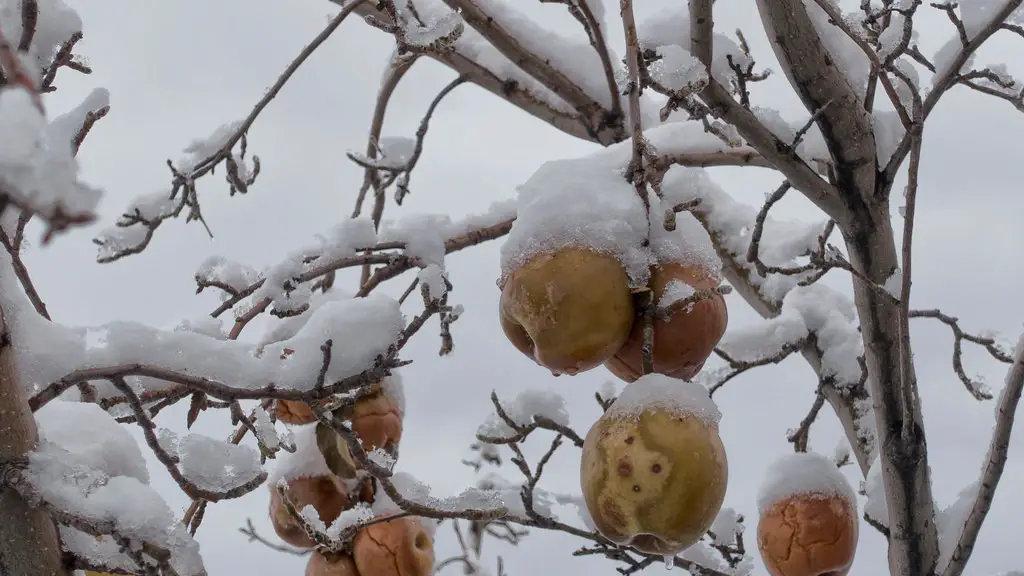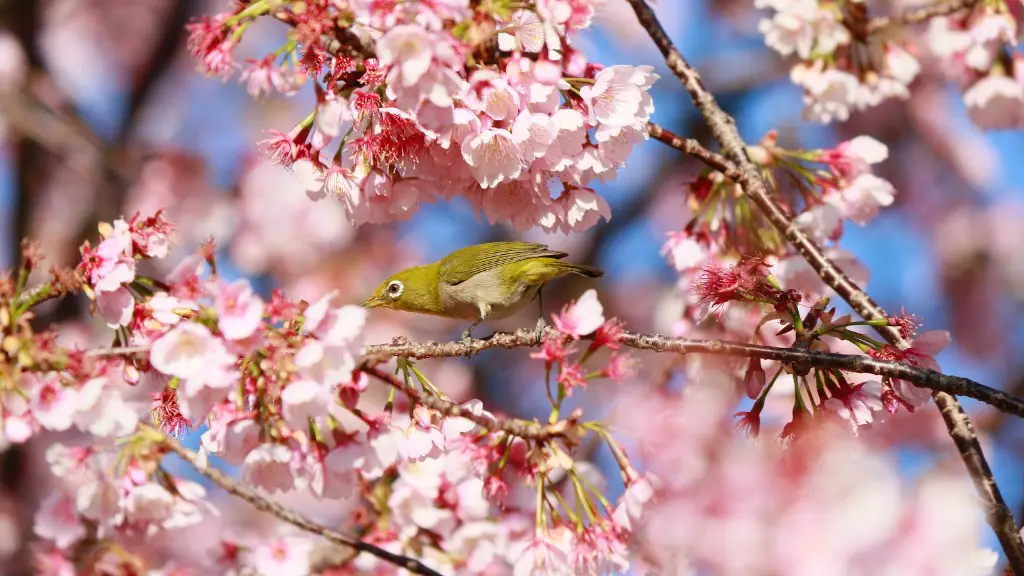Apple trees are susceptible to a number of diseases that can cause them to produce less fruit, or even die. These diseases can be difficult to identify, as they may not show any obvious symptoms. However, there are some tell-tale signs that can help you determine if your apple tree is suffering from a disease.
The most common apple tree diseases are Apple Scab, Powdery Mildew, Cedar-Apple Rust, and Fireblight. To identify these diseases, look for symptoms such as leaves with brown or black spots, powdery white spots on leaves or fruit, yellow or orange spots on leaves, and leaves that are blackened or burned. If you see any of these symptoms, take a sample of the affected leaves or fruit to your local extension office for diagnosis.
How do you know if your apple tree has a disease?
If you see brown spots on the ends of your fruit, it’s a sign of infection. These spots will grow into concentric circles and rot the fruit. The tree’s leaves may also develop small holes or purplish brown spots that look like a frog’s eyes.
One of the best ways to prevent disease is to treat your apple tree with fungicide every fall after harvest. There are many effective commercial fungicides available. Some gardeners also use copper spray to fight off pests and disease.
What does apple fungus look like
Apple scab is a fungal disease that affects the leaves, fruit, and twigs of apple trees. The disease is characterized by small, brown or olive-green spots on the leaves, fruit, and twigs. The spots may be on the underside of young leaves or on either surface of older leaves. The spots on older leaves are more definite in outline and may be velvety-grey to sooty black.
The cause of this condition is unknown, but it is thought to be associated with stress factors such as drought, insect infestation, or mechanical injury. The best course of action is to remove and destroy infected branches, shoots, or fruit.
What are common diseases for apple trees?
Most common problems with fruit trees include aphids, apple scab, brown rot, caterpillars, honey fungus, and poor fruiting. These problems can be controlled with regular spraying, pruning, and pest control measures.
Cedar-apple rust is a disease that affects both cedar trees and apple trees. It is caused by a fungus called Gymnosporangium juniperi-virginianae. This fungus spends part of its life cycle on cedar trees and the other part on apple trees. Cedar-apple rust can cause serious damage to both types of trees. Symptoms of cedar-apple rust include wilted shoots, well-defined areas of burnt-looking, dead foliage or bark, sticky amber ooze, cottony masses at the base of leaves, galls on shoots, and general decline in tree health. On apple trees, symptoms include spots on leaves, brown-black spots on fruit, red-black spots and visible spores on undersides of leaves, and defoliation.
Can a diseased fruit tree be saved?
Unfortunately, there isn’t much you can do to save a diseased tree. This is because of several reasons. To begin with, people don’t normally recognize when a tree is diseased until there are clear signs. This means that it may be too late to start treatment. In addition, the disease spreads fast in trees.
Epsom salt can help to sweeten fruits by increasing the magnesium content in the soil. This in turn will help the tree to yield larger, sweeter fruits. It can also be used on nut trees and fruit shrubs to help with yield.
What is the best fungicide for apple trees
Hi! Here are our top picks for the best systemic and contact fungicides, as well as the best small and large tree sprayers. For the systemic fungicide, we recommend Hi-Yield Vegetable, Flower, Fruit and Ornamental Fungicide. This product is ideal for use on vegetables, flowers, fruit, and ornamentals. For the contact fungicide, we recommend Southern Ag Captan 50W Fungicide. This product is specifically designed for use on fruit, vegetables, trees, and ornamentals. For the small tree sprayer, we recommend the CHAPIN 2 Gallon Sprayer. This product is perfect for spraying 1-2 trees. For the large tree sprayer, we recommend the NorthStar High-Pressure Tree/Orchard Sprayer. This product is ideal for spraying 3+ trees.
External rot is first visible as small, slightly sunken, brown spots that may be surrounded by a red halo As the decayed area expands, the core becomes rotten and eventually the entire fruit. Red-skinned apple varieties may bleach during the decay process and become a light brown.
What does canker on apple trees look like?
Cankers can be a major problem for trees, as they can girdle the stem and kill the tree in a single season. If you see any of the following symptoms on your tree, it is likely infected with cankers:
-Small branches and fruiting spurs with dead, sunken bark
-Bark that flakes off easily on infected twigs
-Girdling of the stem
If you think your tree may have cankers, it is important to have it diagnosed by a certified arborist or tree care professional. They will be able to determine the extent of the infection and recommend the best course of treatment.
Smudges on the apple’s surface can be Gray, Green, Brown, or Black. Smudges can be rubbed or washed off the fruit easily.
What does fireblight look like
Fire blight is a destructive plant disease that can affect a wide range of trees and shrubs, but is most commonly associated with apples and pears. The disease gets its name from the blackened, charred appearance of the leaves and stems of infected plants, as if they have been burned by fire. Fire blight can quickly kill branches and even entire trees, so it is important to be able to recognize the disease and take steps to prevent it.
Cedar-apple rust is a common problem for apple trees. It appears as yellow-orange spots on the leaves, branches and fruit of the tree. Collar rot is a particularly bad problem for apple trees. It can cause stunted or delayed growth and blossoming, yellowing leaves and leaf drop.
What does blight fungus look like?
under conditions of high humidity, the fungus produces spores on theunderside of leaves, which appears as a white mildew-like growth on the leaves and stems. As the tissue dies, it turns grey to brown and dries up within a few days. Late blight spores are microscopic and are spread both by splashing rain and wind.
It is important to spray apple trees during the period from petal drop until just prior to harvest. This is when most of the pests are active and when the fruit is most vulnerable. Several applications of a home orchard type spray will be needed during this period.
Warp Up
There are a few key ways to identify apple tree diseases. One is to look for discoloration or wilting of the leaves. If the leaves are brown or yellow instead of green, this could be a sign of disease. Another way to tell if your apple tree is sick is by looking at the fruit. If the apples are small, misshapen, or have blotchy patches, this could be a sign of disease. If you notice any of these symptoms, it’s important to consult with a qualified tree expert to diagnose the problem and recommend a course of treatment.
If you suspect that your apple tree may have a disease, there are a few things you can do to confirm your suspicions. First, check for signs of early fruit drop or leaf scorching, which can be indicative of a number of diseases. Next, inspect the tree for any lesions or cankers on the bark, as well as any unusual growths. Finally, take a sample of the affected leaves or fruit to a local extension office for identification. By taking these steps, you can be sure to identify any diseases affecting your apple tree and take steps to treat them.





